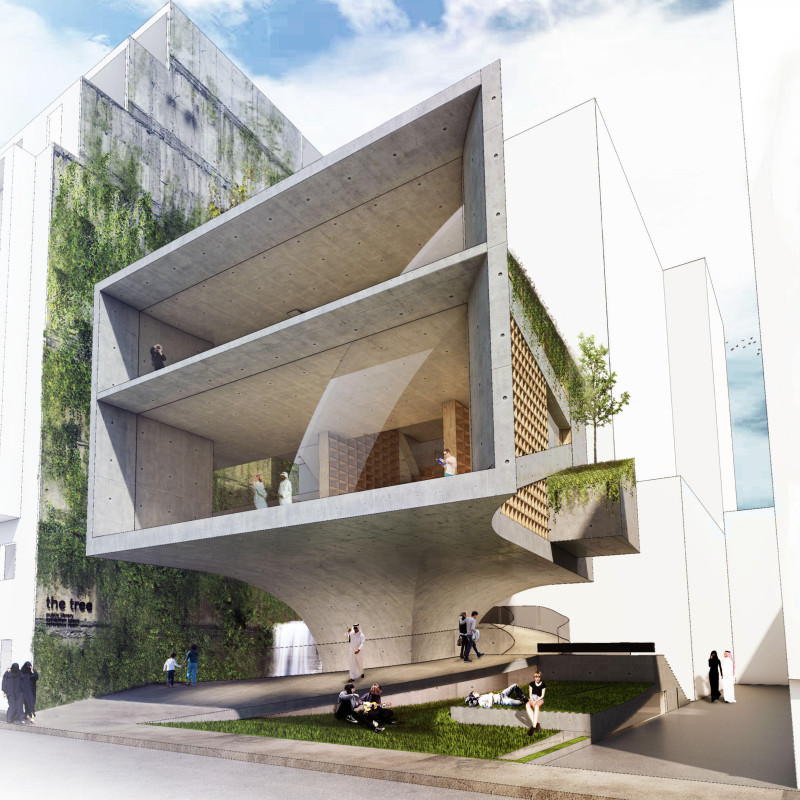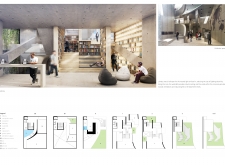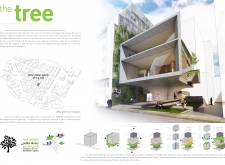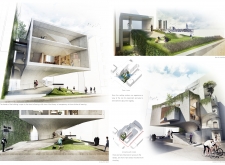5 key facts about this project
### Project Overview
Located in [insert geographical location], the design reflects the region's natural landscape and cultural context. The intent is to create architecture that maintains a dialogue with its environment while meeting the functional requirements of its users.
### Spatial Strategy
The design prioritizes open spaces and fluid circulation, facilitating community interaction. Rooms are arranged to encourage collaboration and accessibility, with consideration given to multi-functional spaces that adapt to various activities. This layout promotes a sense of community while ensuring efficient use of the available area.
### Materiality and Sustainability
Material selection is fundamental to the project's character and environmental impact. The structural framework predominantly utilizes reinforced concrete for its durability, while extensive glass panels enhance natural light infiltration and visual connections to the exterior. Wood finishes add warmth, contrasting with the coolness of steel, which provides structural support. Additionally, local stone is employed in façade treatments, reinforcing the connection to the site’s geology.
Sustainability is a core theme, illustrated through features such as green roofs, rainwater harvesting systems, and the use of reclaimed materials. These strategies reflect a commitment to ecological responsibility, promoting biodiversity and energy efficiency while honoring traditional craftsmanship and local materials.






















































